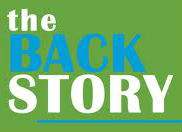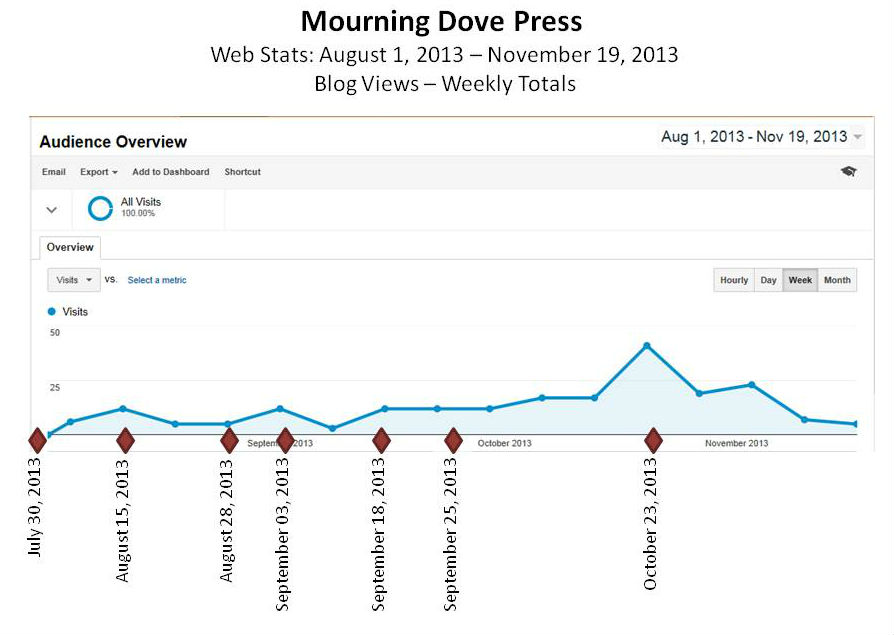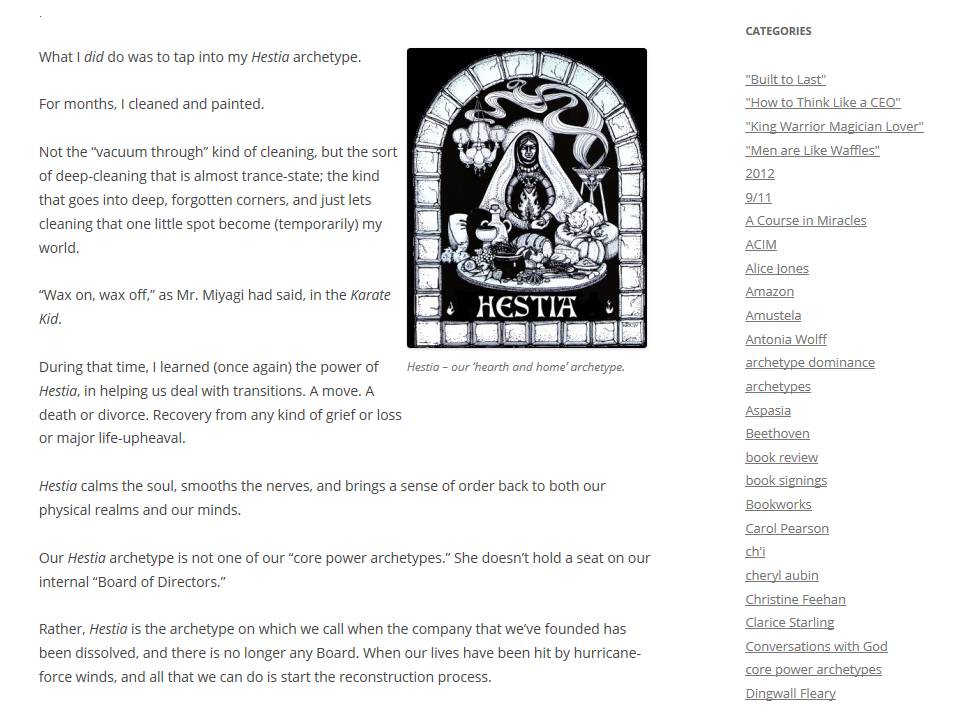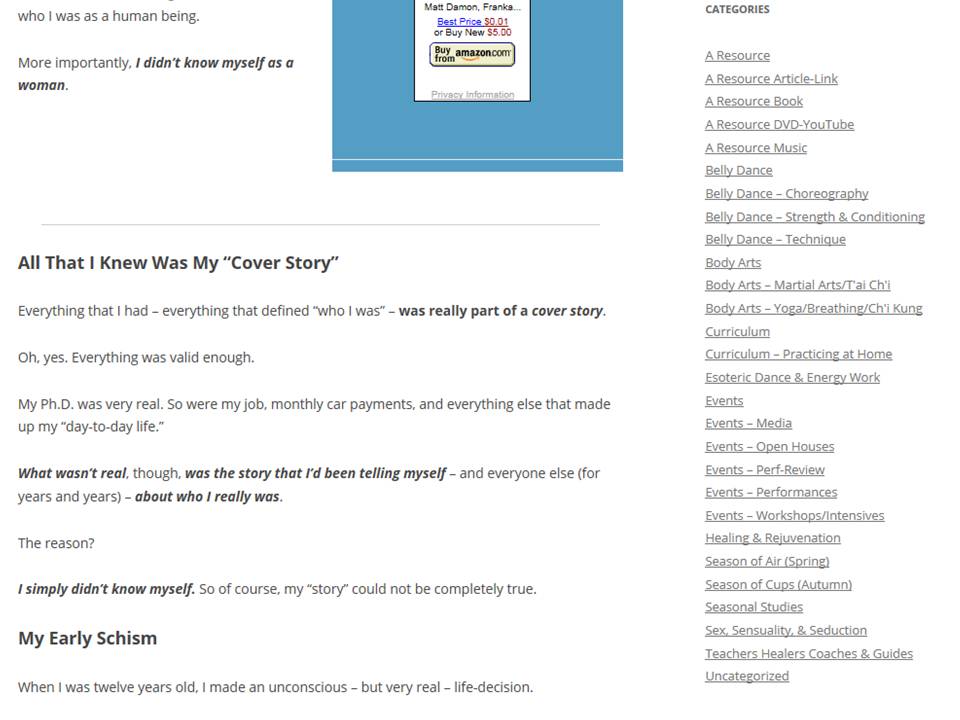Once You Have Some Blog Readership: How to Start Building Your Tribe
Once you have your blog going, and have even a little readership established, what’s your next big step?
It’s to start building your tribe.
A Bit of Backstory
Mourning Dove Press came into being because I had a book to publish.
I knew I was going to self-publish. This was because I wanted to keep creative control. Also, I figured that I would use profits on my self-published book to do more and better marketing; there would be overall more marketing dollars from direct profits than I would have from royalties with a traditional publishing house.
This made sense at the time, and still does.
It particularly made sense when I factored in the growing readership of digital/downloaded books versus the more traditional trade paper books. (About 70% of the books in the personal growth/self-help genre are now digital downloads.)
What I didn’t know was how hard it would be to build a platform; to connect with people, to build that long-term relationship.
In fact, when I was just starting, I didn’t even know that building that long-term relationship was the whole objective.
Personal Backstory
I’d grown up as an academic; intellectually gifted but a little – shall we say – socially awkward. And very much an introvert.
Even when I shifted to full-time entrepreneurship, my role was always to be the “genius in the back room.” I’d come up with the creative concepts, but someone else (usually the company president) would do all the marketing – and would hold all the relationships.
I had a naïve (and wholly unrealistic and completely unfounded) notion that I could publish a book, put a little effort into juicing the marketing engine, and then the book would trundle itself into being a best-seller; providing me with a secure (and even growing) income while I put attention into my next genius-creative project.
Oh, I was so wrong.
So very, very wrong.
And I spent about a year figuring out how wrong I was.
Three Necessary Stages
After getting it that I really didn’t get it, and then learning how to get it, I needed a year just to rebuild my entire business approach. This was a three-stage process after spending about two to three months at Stage Zero, or the research-and-decision-making stage.
The three business-building stages were:
- Stage One: Basic (Re-)Build – Taking down the old website, building a new one that incorporated the blog, porting the old blog posts, and starting the arduous (and not terribly fun) process of blog clean-up,; all this took about four months (for three different but related websites, and then also for this one as well).
- Stage Two: Basic Blog Build-Up – Reaching my (somewhat confused and fragmented) existing tribe with a new blogging approach – and getting back to blogging consistently; I gave this two months of just very steady, diligent blogging – and not even trying to get people to come to the blog until I had a bit of track record re-established. Regular (and intensive) blogging on each of three different blogs each week. About a day’s worth of solid work for almost each and every blogpost, so three days each week went just into blogging. Total time: about two months just focused on blogging, along with updating older blogs and continuing the website rebuild/transition.
- Stage Three: Reaching Out and Tribe-(Re-)Building – Once I’d demonstrated steadiness and consistency – and made it clear (through multiple related blog posts) what the theme / blog topics were about, it was time to invite people in. I eased off on blogging, and focused on reaching out to people; asking them to join one or more of my Opt-In lists. I’m in this stage now, have been in it for the past two months, and will be in it for some time to come.
So it’s not so much about blogging anymore. It’s about growing my tribes, and – of course – the care and feeding of my tribes.
Knowing When to Switch Focus
I switched my focus from blogging to building my Opt-In lists when I had sufficient readership showing up on my website/blogsite to show that there was, indeed, some interest.
I’d already switched focus on two of my major blogsites.
The two blogsites where I write the most (and which serve as Case Studies for this blog) are:
- The Unveiling Journey – archetypes, archetype integration, and life-journeys – further developing ideas first proposed in my book, Unveiling: The Inner Journey, and
- The Alay’nya Studio – body awareness, dance, movement, raw foods (and occasionally, comfort foods), and emotional processing/release work. Also, the Fountain of Youth – how to cultivate, circulate, and use intrinsic (ch’i) energy. This is like the “laboratory notebook” corollary to the Unveiling blog, which is more like lecture notes that expand on a text. Lecture and lab, where life itself gives you the feedback.
These blogs have already kicked in with substantial readership growth over the past few months.
My next step? Doing for you (the readers of this blog) what I’ve done for my other tribes.
The reason that I know the time is right?
See the figure below.
Making Sense of the Data
The figure above shows my for-real blog readership for this blog, taken from Google Analytics. The timeframe is from August 1 (of this year, 2013) through yesterday, November 19. The stats are given on a weekly basis.
You can see that at the beginning – late July and early August – readership was very small. For the second week in August, the total readership was only about ten people, over the entire week.
I kept blogging. (This was my intensive blogging phase.) You can see each blog date with the red diamond on the chart.
Slowly, readership began to rise.
Specifically (see the middle of October), people were finding my site even when I hadn’t published a blog in a week or more. See where the weekly readership is holding steady in mid-October? No blog-writing during that time; at least not for this site. (I was busy doing blogging and working Opt-In lists for my other two top sites, see the links given earlier in this post.)
Then, when I published a new post (October 23), readership spiked.
That was a very good sign.
It meant that I had a little traction.
It’s taken me a month to get back to this site and write a new blog. My attention has been on writing for my other two blogs, and reaching out to the readership base there; building the Opt-ins. (And oh yes, the Opt-Ins have been doubling every month for the sites that I’m actively working – that’s a fabulous rate – takes a whole lot of work, but is so exciting.)
But notice – on the figure above – even after the initial readership spike with the last blogpost, there’s still some follow-up reading. People are finding their way here, and I haven’t been doing anything to encourage it.
No Facebook posting. No sending out the email blasts to my existing (and/or reforming) tribes.
This is all organic, people-coming-here-of-their-own-free-will search-enabled traffic. (Plus perhaps some RSS feeds.)
Thank God for search engines. Thank God for the power of intralinking, and tags, categories, and other little blog-readership-boosting devices. (See my previous posts in this series.)
So my next step?
It’s to do for you (the reader of this blog, right now), what I’ve done for the readers of the other blogs.
Give you an easy-to-find Opt-In form.
(It’s there now. In the sidebar, to the right. See it? Right at the top? Wasn’t there a few minutes ago. I put that in right after writing this post just now.)
Why Growing Your Tribe Is So Important

Building your tribe – the most important thing you can do. Photo: Rachel Doherty. Sourced from: Jeff Goins.
When Opt-Ins increase, revenue increases.
And yes, this depends on what you have to offer: a book, an online course, a coaching program, workshops, whatever. You have to have some product or service to sell.
But industry wisdom is: your revenue is in direct proportion to the size of your tribe. Your tribe grows, and (if you’re doing things right), your revenue grows.
But for your tribe to grow, you have to do one critical thing.
Sisterly Advice: Four Simple Words
I was talking about what I’ve been learning with my sister, Ann Marie.
Annie has just had a summer where there were children in-house. Her eldest son. Her grandchildren. (All of them.) A somewhat step-sibling to the grandchildren.
In other words, a full house of kids. Talk about tribe? She had one!
She was living the life that my mother, who had five of us children, had lived while we were young.
I talked with Annie about learning how important it was to feed my tribe.
She said, in the context of having five children to care for all summer, that it wasn’t that a person had to do all kinds of things for them. It wasn’t a matter of constantly engaging, entertaining, or monitoring them.
Instead, the secret was in four simple words.
According to my sister Ann Marie, the secret for tribe management is:
Be present. Be visible.
That’s it.
Not everything that you do or say has to be words of gold.
Just as not every meal has to be carefully-planned and made from scratch. Sometimes, the kids get peanut-butter-and-jelly sandwiches. (Hey, don’t we all remember PB&J? Guess what I just had for breakfast, while writing this post? Yup. It’s faster and easier than cooking. And right now, the focus is on writing this post for you.)
But even though not every meal has to be fancy, there still needs to be a meal. Five kids, every day around noon, each needing to be fed. Sometimes PB&J. Sometimes something more elaborate. But every day, same time, they need to be fed.
That’s why I call it the loaves and fishes strategy.
What Opting In Really Means
When someone “opts-in” with me, that’s a huge gesture of trust. Intimacy, even. It’s a Martin Buber I-Thou moment; not so much a connection, but a willingness to have a connection.
When someone opts-in, it’s more than saying, Yes, I’ll take your regular emails, and occasionally even read them.
It’s more like saying, Yes, I acknowledge that you’re a thought-leader, and I’m allowing you to influence my thoughts.
In essence, they’re calling you a Master Teacher. (For more on this – very important topic – see: Who’s Your Yoda?.)
That’s why it’s sometimes so difficult to get our nearest-and-dearest to opt-in with us. It’s not that they don’t love us.
They do.
They may also respect us, and agree that we sometimes have words of wisdom.
But there’s a world of difference between acknowledging that someone whom you know has helpful insights – and that you may even call this person up for a little “help-me-out” conversation occasionally – and acknowledging that this person is not only A teacher, but is YOUR personal teacher.
Opting-in with someone shifts the relational dynamics.
Opting-in means acknowledging someone as a Hierophant – a transformational teacher. (For some background, go to Dealing with Betrayal at the Deepest Level – all about the Hierophant’s own transformational journey – and check out the links at the end of that blog post.)
A whole ‘nuther realm.
And a huge gesture of trust.
So when you get those Opt-Ins, be careful, okay? Treat your people with respect.
They’ve opted-in. They can opt-out at any time, just as easily. Maybe even more so. (I’m saying this because I “fired” someone yesterday; someone whose list I’d joined on the recommendation of someone else – this person was simply way-overusing the privilege of my email address. And I sent this person a detailed note as to why I was opting-out. Needless to say, this person was not pleased.)
Some More Good Words
Seth Godin has been called the godfather of tribe-building. Check him out at: Seth Godin’s website.
Also, Jeff Goins writes a damn fine blog, and much of it is relevant to those of us in the early stages of tribe-building. I particularly recommend his post: How to Build a Killer Tribe.
My favorite suggestion?
This is hard work, no kidding. It’s very focused work. It’s constantly building and refining your own skill set and your own message.
So you have to be disciplined, self-motivated, and develop a whole lot of skill-sets. Time, attention to detail, and consistency are all great virtues.
But most of all?
Have fun with it.
Yup.
As Ron Sieh, one of my former T’ai Ch’i Chuan teachers used to say:
Relax. Be “cas”. Hang out with it.
And most of all, have fun.
To your own health, wealth, and overall well-being –
Alianna
Alianna J. Maren, Ph.D. (For more, see my personal website at: Alianna Maren’s website.
Post Script
After all of this, it would be simply rude to close out this conversation without giving you an opportunity to Opt-In with me, right?
The form’s in the sidebar, to the right. Way up at the top of this post. Do the Opt-In thing. You’ll get an email heads-up as for each new blog post, plus special offers from time-to-time. And thank you.









